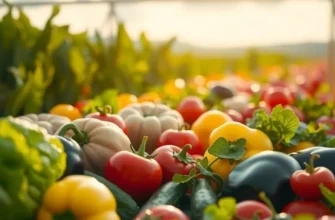Reheating food can often feel like a simple task. However, knowing the best techniques elevates not only the flavor but also ensures a safe dining experience. Whether you’re a busy parent, a college student, or a novice home cook, mastering the art of reheating is essential. In this guide, we’ll explore practical tips and methods to help you effectively and quickly reheat your meals, preserving their flavor and texture along the way. Get ready to make mealtime more efficient!
Choosing the Right Method: Which Works Best?

Reheating food is an underestimated aspect of home cooking, yet it plays a crucial role in maintaining flavor and texture. Choosing the right reheating method depends on the type of food you’re dealing with. Each method has its advantages and specific uses that can significantly impact the final quality of the meal.
The microwave is often the first choice for reheating due to its speed. It’s best suited for moist foods such as soups, stews, and certain pasta dishes. To avoid drying out these dishes, cover them with a microwave-safe lid or a damp paper towel. This helps retain moisture and prevents the food from becoming rubbery. It’s less ideal for breaded or fried foods, which can turn soggy under microwave heat.
The oven, on the other hand, excels at reheating pizzas, casseroles, and baked goods. Using an oven provides even heating, helping to crispen foods that may turn mushy in a microwave. Preheat the oven to a moderate temperature, typically around 350°F (175°C), and cover dishes that need to stay moist with foil. This method takes longer but rewards patience with a texture that mirrors the original meal.
An unexpected but effective tool is the air fryer, particularly for reheating fried foods. The circulating hot air within the appliance provides a crispiness similar to freshly fried items. It’s especially great for fries, chicken wings, and even reheating pizza with a crisp crust. This method generally takes a few minutes longer than the microwave but offers an optimal balance between speed and quality.
For delicate foods such as fish or steamed vegetables, a steaming basket over simmering water can rejuvenate the texture without drying the food. This technique retains moisture and is gentle enough to keep soft foods from breaking apart.
A stovetop method, like stir-frying or gently sautéing, works wonders for rice dishes or stir-fries. Use a lid to trap steam if reheating moist dishes, which helps in keeping the food from drying out. The stovetop conveys higher heat capacity compared to the microwave and can better mimic the initial cooking process.
Cold items, like salads or sandwiches, typically require no reheating. However, if you’re seeking to refresh a sandwich, consider disassembling it and heating only the components that need it. Retain fresh elements like lettuce and tomatoes as they don’t fare well with heat.
Proper reheating also aligns with minimizing waste in the kitchen. For those interested in more ways to reduce food waste, check out low-waste cooking prep tips. Integrating these methods can elevate the reheating process, ensuring meals stay as delightful as the day they were made.
Tips for Perfect Reheating: Keep It Delicious

Mastering the art of reheating can transform leftovers into meals that taste just as good as the original dish. Achieving this requires understanding how to maintain moisture and ensure even heating. Here, we dive into tips to achieve perfect reheating results every time.
Keep It Moist: Dry, chewy reheated food is a common issue faced by many home cooks. To combat this, adding moisture back into the food during reheating is essential. When reheating pasta, casseroles, or rice, add a splash of water, broth, or sauce before heating. This helps create steam, which not only heats the food evenly but also locks in moisture, preventing dryness.
Cover it Up: To further ensure your food retains moisture, cover dishes while reheating. For microwave reheating, use a microwave-safe lid or a damp paper towel. This traps steam and keeps food from drying out. An oven-safe lid or foil works well when reheating in the oven. Keeping food covered helps in preserving flavors and texture.
Stir and Rotate: Even heating is crucial in avoiding cold spots. For this, regularly stirring the food during reheating can make a significant difference. Stirring helps redistribute heat evenly, particularly in thicker dishes like stews or soups. In addition, in microwaves, where uneven heating is a more pronounced problem, rotating the dish halfway through the heating process ensures more uniform warmth throughout.
Low and Slow for Proteins: Proteins like meat and seafood are particularly sensitive to high heat, which can lead to toughness. When reheating, ensure the heat source is moderate. Oven reheating at a lower temperature or using the low-power setting in microwaves can preserve the juiciness and tenderness of these proteins. For more on quickly preparing seafood, check out this speedy seafood prep guide.
Use the Right Equipment: Choosing the right tool for reheating can significantly affect the outcome. While the microwave is convenient, an oven or stovetop might be better for achieving the desired texture and flavor, especially for items like pizza or baked goods. A quick stint under the broiler can add a delightful crispness, while pan-heating can restore that fresh-off-the-grill taste.
Mind the Timing: Over-reheating is a common mistake leading to dried-out or scorched meals. Start by heating for a shorter duration and gradually increase, testing for doneness along the way. This not only safeguards quality but also prevents overcooking while allowing you to adjust moisture or seasoning if needed.
Applying these techniques will help in making reheated meals deliciously satisfying. By keeping an eye on moisture and temperature, as well as using the right methods, your reheated leftovers will become as enjoyable as the first day they were cooked.
Final words
By adopting these reheating techniques, you can ensure that your meals retain their flavor, texture, and safety. From selecting the right reheating method to applying helpful tips, each step makes a significant difference in your cooking journey. No matter your level of experience, these strategies will empower you to make better meals and enjoy them to the fullest. Don’t rush the reheating process; savor the results and the time you save in the kitchen. With practice, you’ll become adept at transforming leftovers into culinary delights, ensuring mealtime is something to look forward to.







